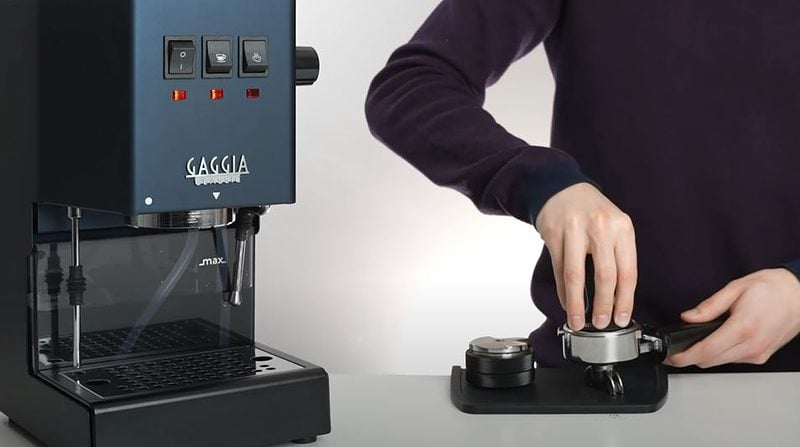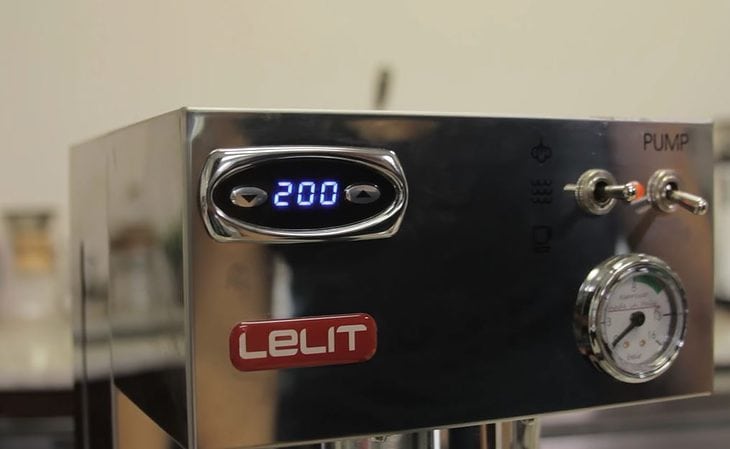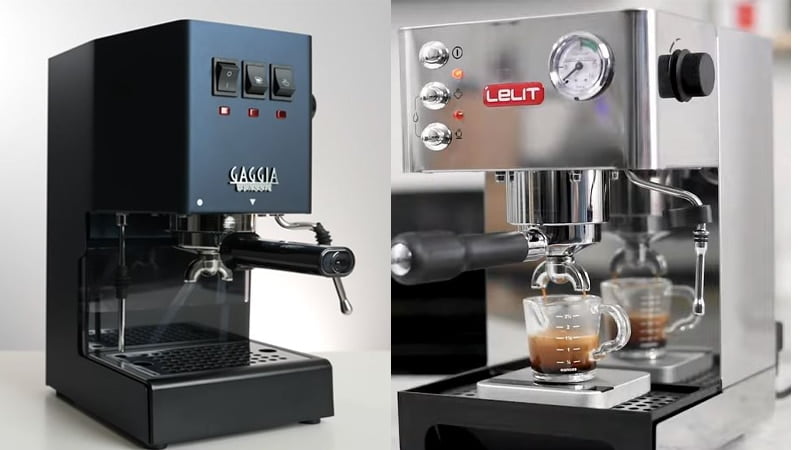In this post, I’m going to compare the two most popular semi-automatic espresso machines in the market. They are Lelit Anna vs Gaggia Classic Pro. Without further ado, the winner is Gaggia Classic Pro.
Although countless super-automatics are available, the Gaggia Classic Pro is still the trusty option that has won many espresso enthusiasts over the years. This model feels robust, runs smoothly, and has a commercial steam wand to froth milk foam that is perfect for flat whites and lattes.
As for Lelit Anna, the runner-up, its overall performance is excellent. The quality of espresso and milk is as good as the winner, but its high price tag makes it not the best deal.
Lelit Anna vs Gaggia Classic Pro: Comparison Chart




Last update on 2025-04-14 / Affiliate links / Images from Amazon Product Advertising API
Lelit Anna vs Gaggia Classic Pro: Key Differences
Lelit Anna lost 3-4 against Gaggia Classic Pro. My testing has shown them to be almost identical in design and performance. So what aspects make me consider the latter to be the winner? Let’s find out!
COFFEE FLAVOR

The Winner: Gaggia Classic Pro
Dosing And Tamping
These semi-automatic machines have no built-in grinders. So you will have to grind the beans on your own and do manual dosing and tamping steps.
First of all, you need to ensure you get the best grinder since it plays an important role in determining the espresso flavor. A lousy grinder will produce ruckus and end up with an uneven and lumpy ground texture.
After grinding coffee beans with your chosen external grinder, you will have to put coffee ground into the portafilter. Then, manually tamp the ground before putting the portafilter in place.
The tamper that comes with these machines is pretty cheap and flimsy. So I think most drinkers would want to upgrade, such as investing in a stainless steel tamper, as soon as possible for more even results.
Generally, manual dosing and tamping are the same for these two machines. So I recommend the former since it’s about half the price of its competitor. I think the amount you have to spend on the Lelit Anna is enough to invest in an automatic model.
Heating System
Both Gaggia Classic Pro and Lelit Anna are single-boiler machines, meaning brewing and frothing processes will occur separately. Between these processes, the machines will take some time to recover the temperature. So if you want to skip the resting phase, it’s wise to invest in a dual-boiler espresso machine since it allows brewing and frothing simultaneously.
Regarding the temperature performance, I believe they are the same. Lelit Anna features PID control, but it doesn’t significantly affect the temperature performance. Drinks that come out of these machines are too hot and may not be suitable for enjoying right out of the spout.
The heating time of the Gaggia Classic Pro seems shorter, probably thanks to its improved aluminum boiler. During testing, I had delicious coffee drinks in my hands within five minutes in most cases.
MILK SYSTEM
The Winner: Tie
Lelit Anna and Gaggia Classic Pro are fitted with integrated decent steam wands. After a few times toying with milk-based drinks, I found the milk texture ideal for coffee specialties like mocha, latte, and flat white. The thickest milk foam texture I received from these machines made an excellent latte, but they are not ideal for making cappuccinos because their wands don’t froth dry microfoam.
UTILITIES

The Winner: Tie
The Lelit Anna includes a more elaborate control panel with a PID display and a manometer.
I’m not very impressed by the PID system, given that Gaggia Classic Pro has the same temperature performance without this technology. The manometer, on the other hand, is very helpful as it tells if the pump pressure is working fine. That way, controlling the strength of espresso in the Lelit Anna is easier.
Gaggia Classic Pro has pressurized filter baskets, allowing you to use ESE (Easy Serve Espresso) pods or pre-ground coffee without hassle.
ESE pods can be useful when you’re in a rush and have no time to grind your coffee beans. Generally, I’ve found the taste extracted from those pods is determined mainly by the pods themselves instead of your machine, and they are far from matching the quality of fresh espresso.
Lelit Anna has utilities that Gaggia Classic Pro doesn’t and vice versa. So we have a tie here!
CLEANING AND MAINTAIN
The Winner: Tie
It’s no secret that cleaning and maintaining are almost everyone’s least favorite parts of having an espresso machine. Fortunately, both Lelit Anna and Gaggia Classic Pro aren’t arduous to clean.
Their brew groups are removable, so they should be cleaned regularly. I recommend taking care of those after every use. You will want to ensure any leftover coffee grounds are removed from the portafilter basket once you’re done operating your machine.
Also, don’t forget to use a damp cloth to clean off the steam wand after every use. The angle of the Gaggia Classic Pro’s steam wand makes wiping it a bit awkward, particularly if you place this machine on a lower counter or table.
It is best to descale (long-term clean) these units every two months, especially if they are getting used daily. This process is slightly more complex than the average machine, taking about 40 minutes to finish and requiring undivided attention for most of that time. The descaling solution is not included with your purchase, so you must buy it separately.
Lelit Anna Vs Gaggia Classic Pro: Similarities
SILENT OPERATION
The noise emitted by today’s espresso machines is mainly due to the grinding process. As mentioned above, both Lelit Anna and Gaggia Classic Pro have no grinder, so they won’t produce much noise.
CUP WARMING TRAY
These gadgets have a single boiler, so you have to brew coffee and froth milk separately rather than consecutively. The good news is that they feature a passive integrated cup warming tray. So after extracting a shot of espresso, you should put the shot on this tray to keep it hot before continuing to work with the milk.
Quick Rundown of Gaggia Classic Pro
- Solid Steel Housing, Made in Italy
- 9 Bar Espresso Extractions
- Stainless Steel 58mm Commercial Portafilter
- Commercial Three Way Solenoid Valve
- Commercial Steam Wand
Last update on 2025-04-14 / Affiliate links / Images from Amazon Product Advertising API
Quick Rundown of Lelit Anna
Product Videos
Related Articles to Gaggia Classic Pro
- Gaggia Brera vs Classic Pro: Which Model Should You Choose? Are Fully-automatics better?
- Gaggia Carezza Deluxe vs Classic Pro: Comparison Of The Two Espresso Machines For Entry-level
- Gaggia Classic Pro vs Quickmill 820: 2 Machines With Secure Mounting – Which One Brews Better Espresso?
- Flair Pro 2 vs Gaggia Classic Pro: A Worthwhile Debate Of Conventional Vs Unique Machines
- Flair 58 Vs Gaggia Classic Pro: Detailed Comparing to Find The Better One
- Rancilio Silvia M Vs Gaggia Classic Pro: A Detailed Comparison
- Lelit Anna 2 Vs Gaggia Classic Pro: Which One Do I Prefer More?
- Gaggia Classic vs Gaggia Classic Pro: Which Version Is Better?
- Breville Infuser vs Gaggia Classic Pro: Honest Comparison Of 2 Budget Machines For Beginners
- Breville Duo Temp Pro vs Gaggia Classic Pro: 5 Differences To Find Out Why You Should Invest In the Duo Temp Pro
- Breville Bambino Plus Vs Gaggia Classic Pro: Which Is Suitable For Your Taste?
- Breville Barista Express Vs Gaggia Classic Pro: Which Is A More Suitable Purchase?
References:
- Gaggia Classic Pro: https://www.gaggia-na.com/products/gaggia-classic-pro
- Lelit Anna: https://lelit.com/product/anna-pl41tem/

I’m Floyd J. Alcock, an experienced barista with a deep love for coffee. I curate personalized coffee experiences, guiding customers through diverse flavor profiles and suggesting ideal brewing methods. My extensive knowledge of espresso machines enables me to recommend the best equipment to match specific needs and budgets. Sharing my expertise and passion with coffee enthusiasts brings immense satisfaction. I look forward to continuing my journey of coffee discovery with every customer I serve, fostering connections over a shared love for this magical beverage.
